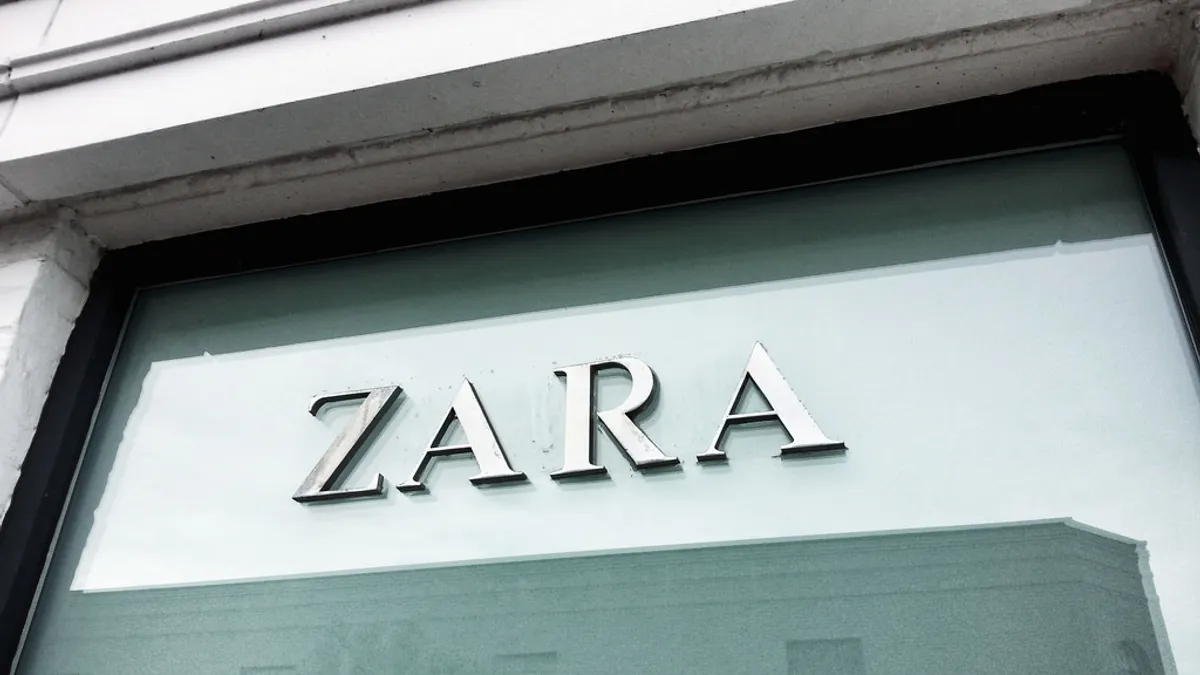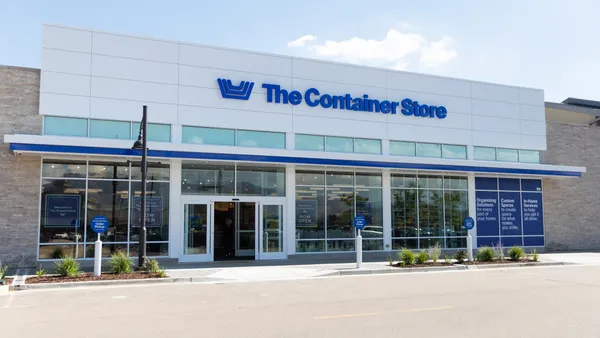Dive Brief:
-
Inditex SA, owner of fast-fashion chain Zara, on Wednesday reported Q4 net profit of €952 million (about $1.01 billion U.S.) on sales of €6.91 billion, compared with analysts' estimates of €961 million and €6.94 billion cited by MarketWatch.
-
Inditex's 2016 net profit rose 10% to €3.16 billion ($3.36 billion) from €2.88 billion, and sales for the year rose a record 12% to €23.31 billion, more or less meeting FactSet analyst expectations for €3.18 billion in net profit and €23.33 billion in sales. Full-year same-store sales rose by 10%, up from 8.5% in fiscal year 2015, with positive same-store sales growth in all geographies and across all brands.
-
During the year, Inditex opened 279 stores (net of closures) in 56 markets, including five new markets, lifting its network to 7,292 stores in 93 markets. The company plans to open between 450 and 500 new stores in 2017 while absorbing 150 to 200 smaller locations, and will accelerate its e-commerce operations: Zara's online store will go live in Thailand and Vietnam in the near future, launching in India during the second half of the year.
Dive Insight:
Zara’s name comes up a lot in discussions about apparel retail, mostly because the company continues to shrug off the many challenges faced by rivals, including slow traffic and minimal shopper interest. There are several reasons Zara so often sidesteps danger, above all is its supply chain. The retailer, which invented fast fashion and continues to master it, runs most of its own factories and controls most of the supply chain. This helps Zara order up small batches of inventory on the fly and get them into stores in record time. That approach — small batches, record time to market — helps it adjust more quickly to phenomena like unseasonable weather.
As other retailers work to catch up by accelerating their own supply chains, Inditex is leaving little to chance. The company said that ordinary capital expenditure this year will reach some €1.5 billion, driven mainly by investments in customer-oriented technologies and R&D projects, expanding its eco-efficient store base, upgrading its logistics operations and shoring up the second-hand clothing collection and fiber recycling programs and research, among other areas.
In his statement Wednesday, Inditex CEO Pablo Isla touted the company’s 2016 performance against a backdrop of strong prior-year performance and its ongoing efforts to make stores more sustainable, with more programs to employ recycling and use alternative fabrics. During the last five years, Inditex has invested more than €7 billion on sustainability efforts including its LEED Gold-certified Pull&Bear headquarters in Spain.
In all, the number of eco-efficient Inditex-owned stores worldwide climbed 741 in 2016 to 4,519, corresponding to 62% of its total store base. "Key investments continue to be made with the medium- and long-term horizon in mind, framed by the ambition of making the company ever more sustainable from the financial, social and environmental perspective,” Isla said.














